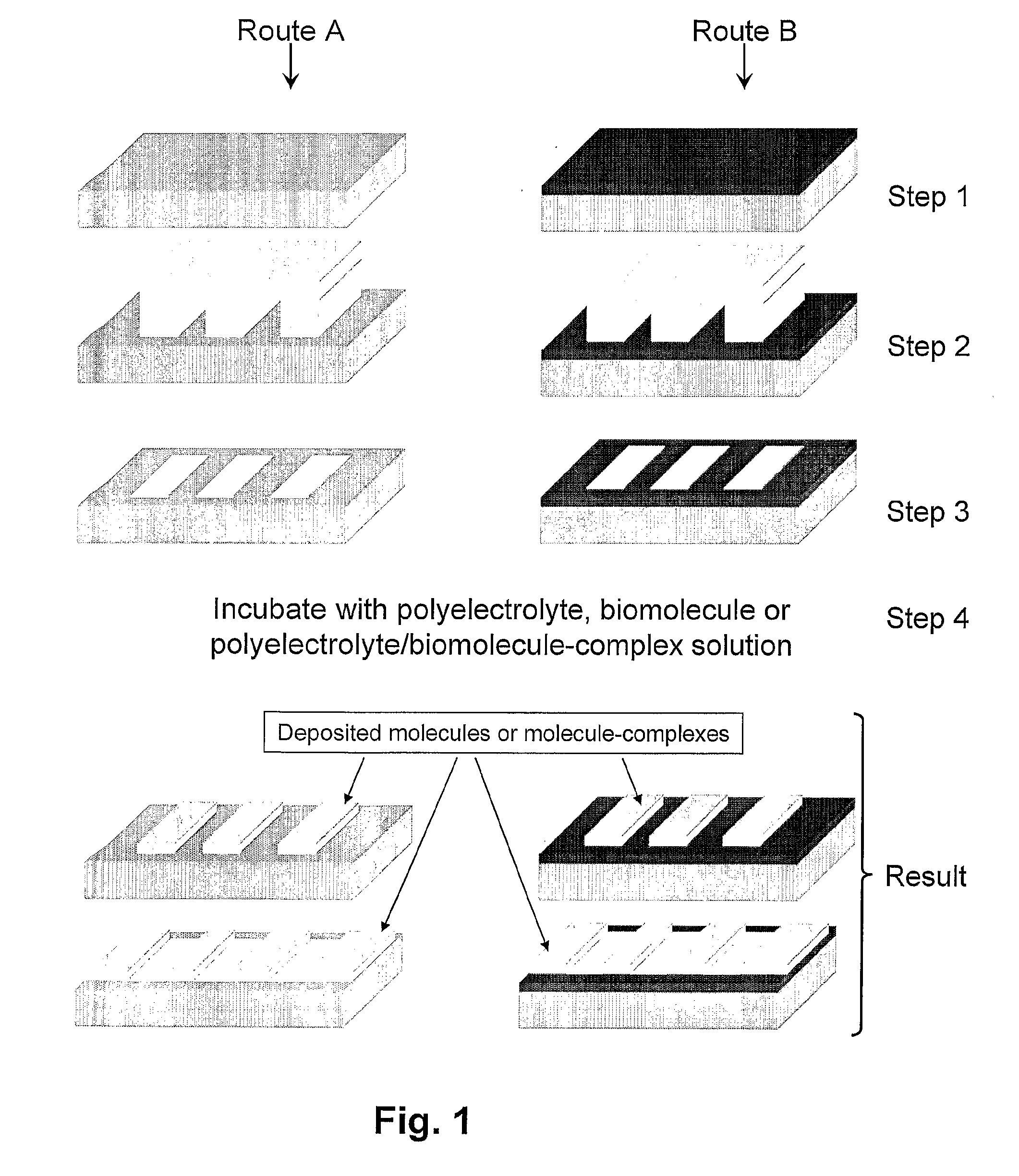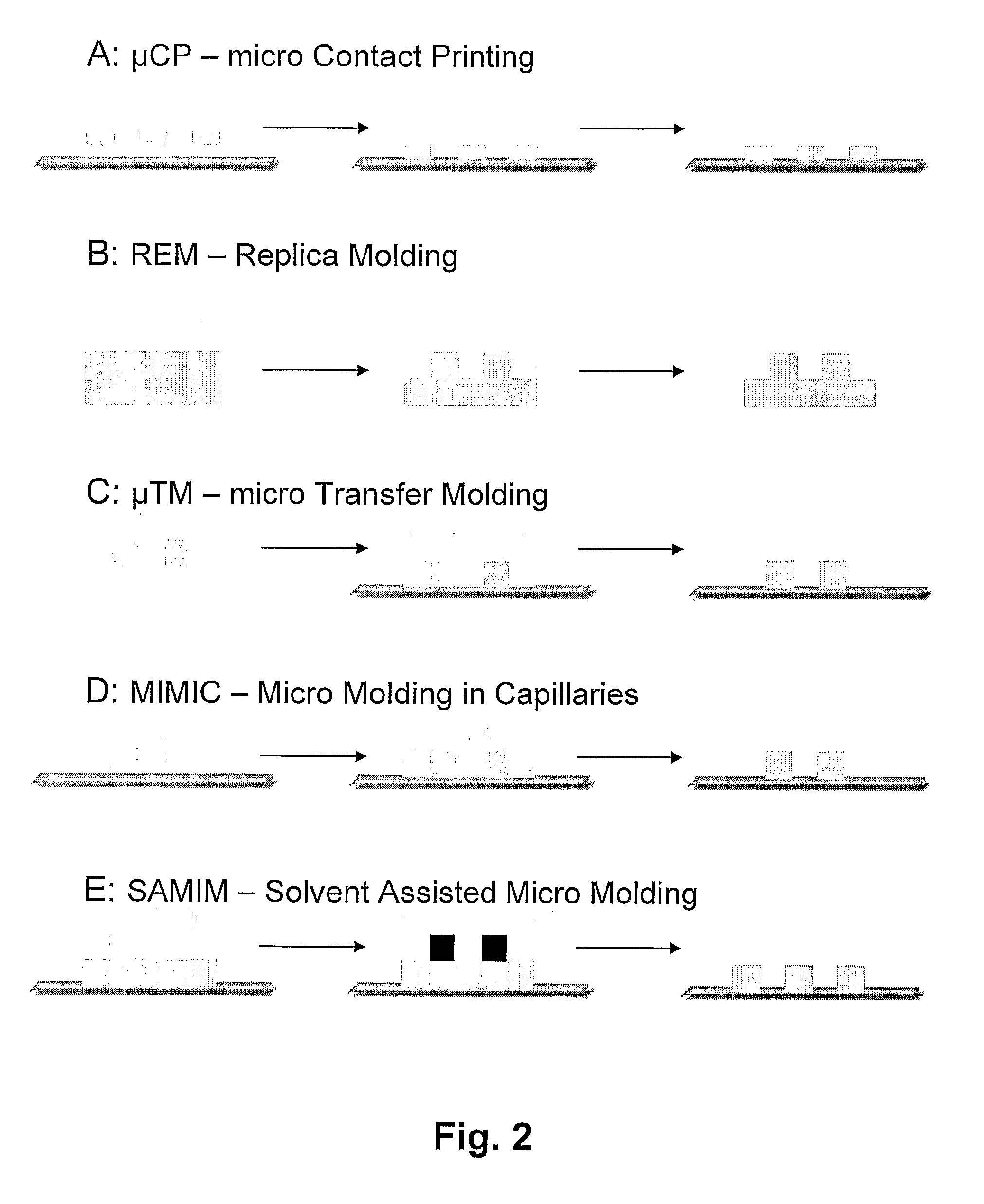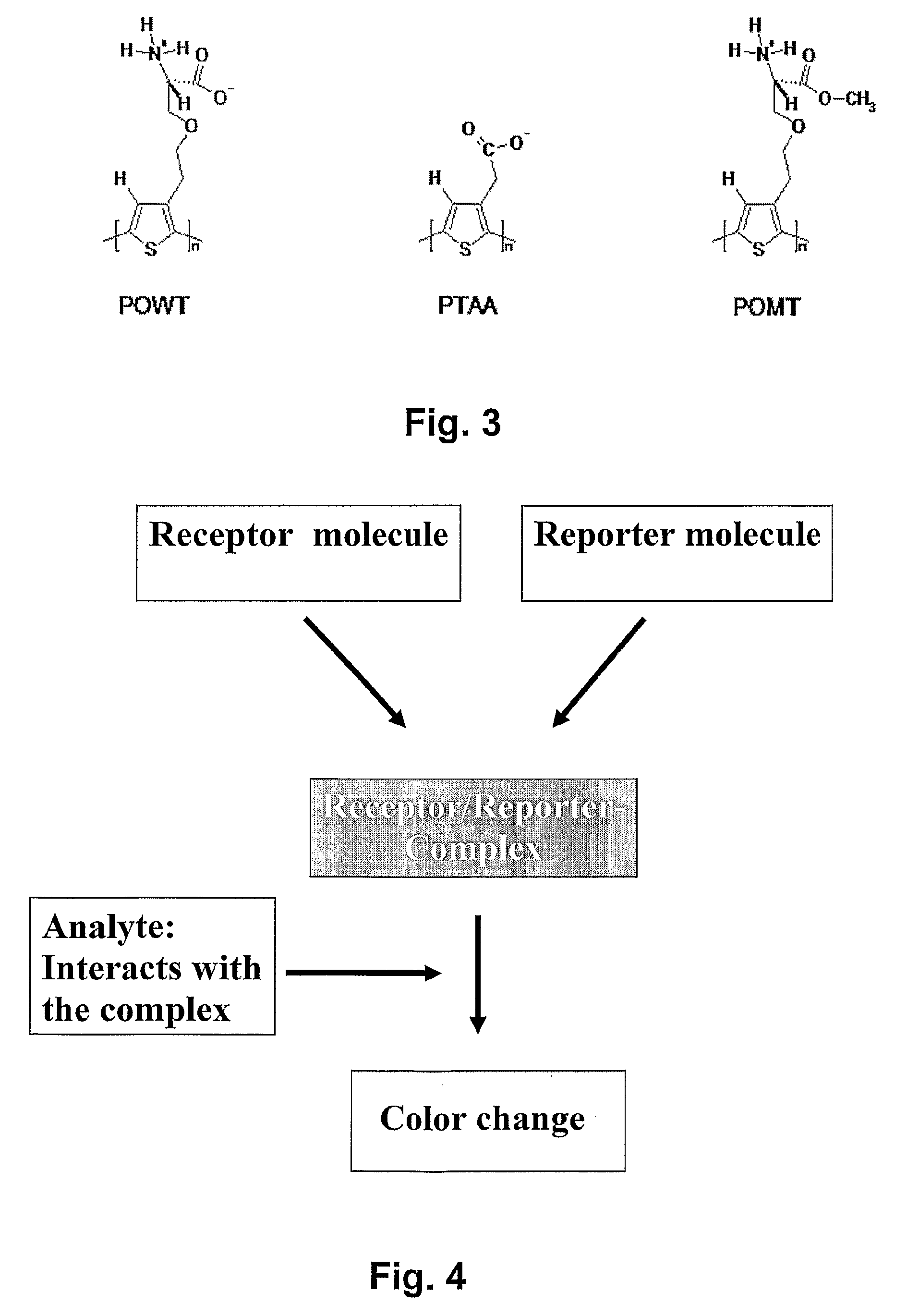Patterning Method For Biosensor Applications And Devices Comprising Such Patterns
a biosensor and pattern technology, applied in the field of patterning a biosensor layer, can solve the problems of inability to accommodate biological molecules or water soluble polymers, high equipment requirements, time-consuming, etc., and achieve the effect of not being attractive to biosensors, pedot/pss, and aggressive chemicals or polymers unreactive to biosensors
- Summary
- Abstract
- Description
- Claims
- Application Information
AI Technical Summary
Benefits of technology
Problems solved by technology
Method used
Image
Examples
example 2
Immobilization of a Zwitterionic Conjugated Polyelectrolyte / DNA Complex From Water Solution (Route A)
[0094] Stamps and substrates are provided according to VI in the detailed description of the present invention. The surface of the individual substrates is patterned, with respect to surface free energy, by placing separate stamps onto them and incubating for 30 min. Stock solutions containing POWT (0.2 mg / ml) / single stranded DNA (2 / 1 on monomer basis) complex in phosphate buffer (20 mM, pH 7) and POWT (0.2 mg / ml) / double stranded DNA (2 / 1 on monomer basis) complex in phosphate buffer (20 mM, pH 7) was then prepared and incubated for 5 minutes. 30 μl of the solutions was placed on individual patterned surfaces. After 20 minutes of incubation at ambient conditions the individual droplets were removed by blowing with nitrogen gas until the substrates is completely dry. The fluorescence was recorded with an epifluorescence microscope (Zeiss Axiovert inverted microscope A200 Mot) equippe...
example 3
Immobilization of a Zwitterionic Conjugated Polyelectrolyte / Peptide Complex From a Buffered Water Solution (Route A)
[0095] Stamps and substrates are provided according to VI in the detailed description of the present invention. The surface of the individual substrates is patterned, with respect to surface free energy, by placing separate stamps onto them and incubating for 30 min. Stock solutions containing POWT (0.5 mg / ml) / poly-glutamic acid (0.5 mg / ml) in phosphate buffer (20 mM, pH 7) solution and POWT (0.5 mg / ml) / poly-lysine (0.5 mg / ml) in phosphate buffer (20 mM, pH 7) was then prepared and incubated for 5 minutes. 30 μl of the solutions was placed on individual patterned surfaces. After 20 minutes of incubation at ambient conditions the individual droplets were removed by blowing with nitrogen gas until the substrates is completely dry. The fluorescence was recorded with an epifluorescence microscope (Zeiss Axiovert inverted microscope A200 Mot) equipped with a CCD camera (Ax...
example 4
Modification of a POWT Coated Glass Substrate and Transfer of DNA to a Zwitterionic Conjugated Polyelectrolyte (Route B)
[0096] Stamps and substrates are provided according to VI in the detailed description of the present invention. The surface of the individual substrates is patterned, with respect to surface free energy, by placing separate stamps onto them and incubating for 30 min. A stock solution containing POWT (0.5 mg / ml) in water solution was then prepared and incubated for 30 minutes. 50 μl of the solution was placed on a clean glass surface. After 20 minutes of incubation at ambient conditions the droplet were removed by blowing with nitrogen gas until the substrate is completely dry. Then a patterned PDMS stamp was placed on the uniform POWT layer and a picture was taken. After this step, a drop containing single stranded DNA (5 nmol / ml) was placed on the modified POWT and incubated for 20 min and then removed by blowing with nitrogen gas. The fluorescence was recorded w...
PUM
| Property | Measurement | Unit |
|---|---|---|
| Mass | aaaaa | aaaaa |
| Resonance energy | aaaaa | aaaaa |
| Elasticity | aaaaa | aaaaa |
Abstract
Description
Claims
Application Information
 Login to View More
Login to View More - R&D
- Intellectual Property
- Life Sciences
- Materials
- Tech Scout
- Unparalleled Data Quality
- Higher Quality Content
- 60% Fewer Hallucinations
Browse by: Latest US Patents, China's latest patents, Technical Efficacy Thesaurus, Application Domain, Technology Topic, Popular Technical Reports.
© 2025 PatSnap. All rights reserved.Legal|Privacy policy|Modern Slavery Act Transparency Statement|Sitemap|About US| Contact US: help@patsnap.com



